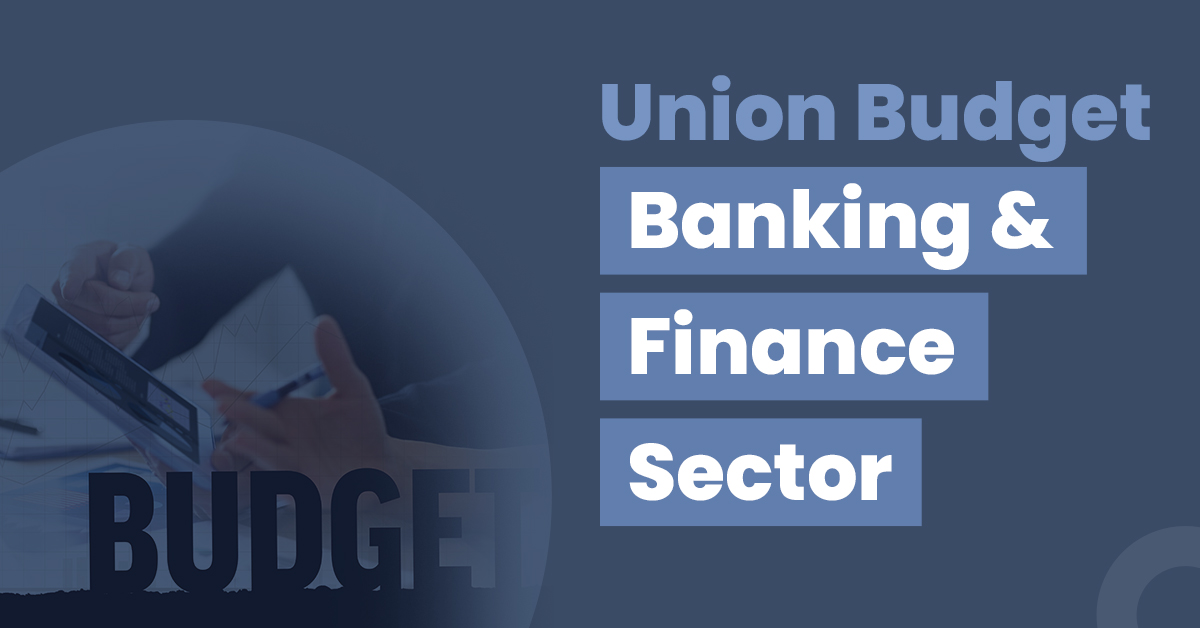Union Budget 2022-23 for Banking and Finance Sector


Union Finance Minister Nirmala Sitharaman presented the Union Budget 2022-23 in Parliament on 1st February 22. The primary goal of this year’s budget is the economic growth and expansion of India for the next 25 years- the ‘Amrit Kaal.’
Battling an alarming pandemic was the primary challenge that was discussed during this year’s budget announcement. Tackling rising inflation and aiding all sections of the finance section are the key areas that the government will be focusing on.
Read on to know the key announcements made in the Union Budget 2022-23 with respect to the Banking and Finance sector.
Banking and Finance Sector in India: An Overview
The banking sector in India is a vast network with more than 120 private, public, foreign and regional rural banks scattered around the country. Several nationalised and private banks, such as the State Bank of India, Punjab National Bank, and ICICI Bank, have an extensive network of branches across this country.
The total asset value of the banking institutions in India stands at 2.6 trillion USD, as per latest reports. Loans and advances are growing at a rate of 6% than the previous year.
Despite limited awareness of digital banking among India’s rural population, new bank accounts opened in the last financial year have increased significantly. This is primarily due to the initiatives and schemes that the Reserve Bank of India has been effectively introducing for the past few years.
Despite facing a challenging pandemic, the banking sector in India has managed to pull up economic growth periodically.
Also Read: Union Budget For Auto Industry
Banking and Finance Sector in Union Budget – Key Announcements
Union Budget 2022-23 emphasised on digitisation of banking and currency to boost India’s economy. Some of the essential announcements made in relation to the banking and finance sector are:
- 1.5 lakh post offices in India will be equipped with Core Banking System (CBS) to enable digital banking in every part of this country.
- 75 districts will receive Digital Banking Units (DBUs), set up by nationalised and commercial banks in India.
- The Reserve Bank of India will introduce a digital currency, or Digital Rupee, based on blockchain technology.
- The government has planned to introduce sovereign green bonds exclusively to collect funds for the development of the green energy and infrastructure sector.
- ₹15,000 crore has been allotted to support the growth of banking and fintech sector.
- Bad Bank process or amending bankruptcy code has been included in this Union Budget to make the resolution process quicker.
- Extension of Emergency Credit Line Guarantee Scheme (ECLGS) under the Kamath Plan is among several top highlights of the finance budget this year.
ECLGS (Emergency is an initiative aimed towards helping business units that were financially affected during the pandemic. The ECLGS credit has been increased by ₹50,000 crore.
- Virtual assets like cryptocurrencies will be taxed at 30%.
- Government will also charge receivers of virtual gifts.
- The Union Budget will offer financial aid to finance education courses and services.
- A new legislation will replace the existing Special Economic Zone Act to increase states’ efficiency of resources and infrastructure.
- India’s banking and finance sector will benefit indirectly from the budget allocations made to other sectors like railway, defence, education, etc.
- This year’s budget also intends to closely monitor ways to increase digital financial participation in this country.
Shortcomings of the Budget in Relation to Banking and Finance Sector
As per experts, the banking and finance sector was not among the gainers in the Union Budget 2022-23. The budget allocations made for 2022-23 were not at par with the expectations of this country’s financial industry because they excluded several beneficial factors.
The shortcomings of Union Budget 2022-233 are as follows.
- The ₹15,000 crore allocation is an insufficient amount for development of the banking industry owing to the growth potential that the sector has.
- ECLGS has been restricted to specific industries and requires expansion.
- The green energy industry is still in its initial stages in India. Its scalability is hard to calculate; hence, the introduction of a green bond can be a risky step.
Implications of Budget Allocation on Banking and Finance Sector
The following are the implications of the Union Budget 2022 on the financial sector:
- Digitisation of Post Offices will help financial institutions tap into the rural population and enable online access to all post office accounts. This will boost the digital banking initiative exclusively.
- Extension of the ECLGS will allow several businesses to restructure after enduring the negative impacts of the pandemic.
- Taxation of digital assets will reduce bad practices and, in addition, boost the government’s wealth generation capabilities.
- Education in finance will boost employment opportunities and start-up expansions.
- The Special Economic Zone Act will monitor the allocated budget for infrastructure development more efficiently.
- Bad bank process had scope for more inclusion; however, the announced measures will positively affect the error resolution process.
- The Digital Rupee initiative will make a mark for India on the digital trading world map and will boost its stock market presence exceptionally.
- Digital Indian Currency will also improve financial security in terms of payments and other forms of transactions.
- Digital Banking Units (DBUs) will make the transition processes of digital India more efficient with importance to rural sectors. It will also expand the digital banking network for India.
Final Words
As per Union Budget 2022-23, the Government of India will be primarily focusing on overcoming the overwhelming negative effects of the pandemic. The measures and initiatives announced for the finance and banking sector will help to lift the economy and tackle the challenges of inflation.
The budget objectives will definitely benefit the sector; however, a practical implication and focus on a broader spectrum will improve this sector’s potential. In addition, the participation of this nation’s rural mass in online banking will open opportunities within India’s industries.
Frequently Asked Questions
What is the Kamath Plan?
K. V. Kamath Plan (Committee) is a special unit set up by the Reserve Bank of India to restructure the loans for small-scale businesses and industries that have been affected by the Covid-19 pandemic.
Shri K. V. Kamath is the Chairperson of the Kamath Committee. Other committee members are Shri T. N. Manoharan, Shri Ashvin Parekh and Shri Sunil Mehta.
What is Digital Rupee?
Digital Rupee is an initiative by the Reserve Bank of India (RBI) to create and regulate a centralised digital currency called the Central Bank Digital Currency (CBDC). This initiative will focus on boosting the adoption of blockchain technology in India and improving India’s presence in the world of crypto.
What are Digital Banking Units (DBUs)?
Digital banking provides access to all banking processes through an online spectrum. To aid this initiative, the government will be setting up Digital Banking Units (DBUs) all across the country in collaboration with commercial banks in India. They will offer digital access to online banking services throughout the country.







